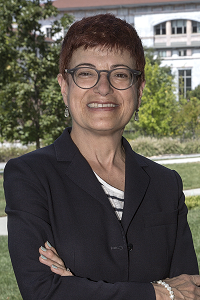Radiology and Artificial Intelligence: Naturally Compatible
Oct. 6, 2017
Instead of sounding alarm bells about artificial intelligence (AI), also called machine learning (ML), radiology is singing its praises.
 |
Asked about the concern that machines will take over for doctors, Dr. Meltzer is quick to rejoin. “I think that’s the wrong interpretation of artificial intelligence,” she says.
Dr. Meltzer, like other leaders in the field, is excited about the potential AI/ML offers for improving the specificity of image-guided medicine. AI/ML can quantify images and provide the computing power to more quickly make comparisons regarding disease processes and responses to treatment. AI also can relieve radiologists of some routine tasks, giving them more time for collaborating with other specialists and with their patients in diagnosing and treating the most difficult multi-system disease processes, something machines just cannot do alone.
“We need to focus on developing better processes for diagnosing and treating at-risk and early-disease patients, which will yield better outcomes for patients and decrease the incidence of late-stage disease,” she says.
These advances, of course, will depend on collaborating in new ways and with new partners in research.
“Nabile, Elizabeth, and I are very excited about collaborative research involving imaging sciences and biomedical informatics as well other medical specialties,” she says, referring to Nabile Safdar, MD, MPH, associate professor and vice chair for Imaging Informatics, and Elizabeth Krupinski, PhD, professor and vice chair for Research in Radiology and Imaging Sciences.
The department is leading the change, Dr. Meltzer says. “There are exciting initiatives involving all aspects of our tripartite mission of clinical care, education, and research, including recruitment of faculty with expertise and interest in biomedical informatics and AI/ML.”
Over the next year, the Rad Report will feature the department’s initiatives regarding artificial intelligence and machine learning. If you have a story about AI and your work, contact Emory Radiology’s writer, Sam Marie Engle, at sengle@emory.edu. ■



